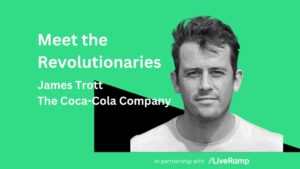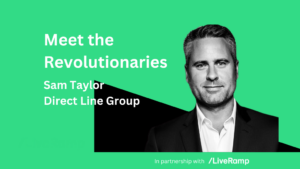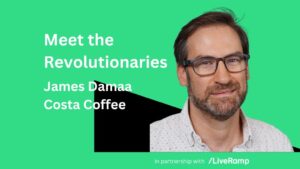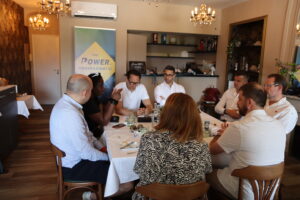
Q&A with Seun Odeneye, Managing Director, UK and Ireland, Matterkind
Hawk Talks is our regular series in which we speak to industry experts about current themes and issues in their sector. This month, Chris Childs talks to Seun Odeneye, managing director for the UK and Ireland at Matterkind about his role, addressable TV and why every day’s a school day at the agency.
Chris Childs: Tell us a bit about your role at Matterkind – and what you’re most proud of
Sean Odeneye: Matterkind UK is IPG’s addressable activation business. By addressable activation we mean the understanding and connecting of individuals with a relevant message at the right time across the standard digital channels, as well as the emerging ones such as digital audio and digital out-of-home (DOOH). We need to constantly future proof our capabilities when it comes to addressable solutions, ensuring we are at the forefront of technology, data and inventory selection for our clients.
It sounds a cliché, but it is my dream job – not just because I get to work with such a great team and deliver cutting edge solutions for our clients (although that is a key part of it), but because I’m a black man heading up an advertising agency in 2022. And for someone of my generation, that’s a big deal.
In terms of what I’m most proud of, I consider myself hugely fortunate to work with amazing people every day (I’m biased obviously – but I genuinely believe this to be true!)
I’m consistently impressed with how smart and resourceful my teams are, the way in which they approach challenges and how they collaborate, not just within Matterkind UK, but throughout the various specialist IPG agencies – all with the one aim to deliver for our clients.
CC: What have been the biggest changes in programmatic since you’ve been in your current role? And the greatest challenge?
SO: The increasingly digital world is driving huge change and we’re seeing exponential growth with the emergence of addressability. eMarketer references that in 2023 the average UK person will have 12 connected devices and 2700 digital interactions per day, which leads to 100,000 opportunities to connect per hour.
Looked at another way, YouTube has been around for 17 years; in another year we’ll have the first adult that has only ever known video content to be streamed on demand. And in four years’ time, that generation will be entering agencies with a demand first mindset with linear being an afterthought. That evolution paves the way for precision and addressability.
Constant change – whether that’s in regulation, channel capability, or the availability of addressable channels – is also the biggest challenge. But it’s also our greatest opportunity; it’s our job to ride the wave of these shifts and make sure we are working with our clients to position them in the right way so that they can deliver on their business objectives.
CC: What do you think will be the big topics in programmatic over the next 12 months and beyond?
SO: Life after the third-party cookie, transparency and scaleability have been widely discussed over the past two or three years – and that’s unlikely to change.
But what is really exciting is the emergence and growth of addressable TV.
Demand side players are aligning themselves with MarTech solutions – Microsoft and Netflix, The Trade Desk and Disney, etc – indicating that streaming services are going to be programmatic first. And that evolving definition of TV creates some great opportunities for addressable media.
Meanwhile, for today’s younger generation ‘watching TV’ means on-demand, YouTube, Netflix, etc – television that they control. ‘Live’ TV is limited to when they can interact; they need to watch Love Island for example when it’s on so they can dual screen and talk about it on Twitter. Again, that dynamic creates big opportunities for us.
CC: How big a problem is brand safety in 2022?
SO: Most organisations define brand safety as ensuring their ads do not appear next to inappropriate content online. But I believe it should go much wider and look at their positioning in different channels – DOOH, TV, influencer marketing, etc – and incorporate everything connected to the brand’s reputation.
To give you an example, a fast-food brand might use a DOOH ad to promote a particular product that it has on offer at a nearby outlet. But if that generates excessive demand and the item sells out, a lot of people are going to be disappointed when they get to that restaurant – and, in the age of social media when they can vent their frustrations immediately online, that is potentially damaging to the brand.
The key is getting better at understanding different channels, using real-time data, and putting right content in front of the individual at the right time (in the case of the fast-food brand, ensuring the ad stopped running when stocks ran out.)
Brand safety requires a holistic approach – making sure that advertising doesn’t do more harm than good.
CC: What is your approach to new and emerging channels?
SO: We don’t have a specific approach for emerging channels, our focus is about finding the right people wherever they happen to be – the more channels there are, the greater opportunity for our clients to put the right message in front of the right person at the right time.
Every day’s a school day for us; continued learning is integral to Matterkind UK’s culture – and that enables us to continually expand our knowledge, understand the different channels as they appear, and use that expertise to deliver for our clients.










